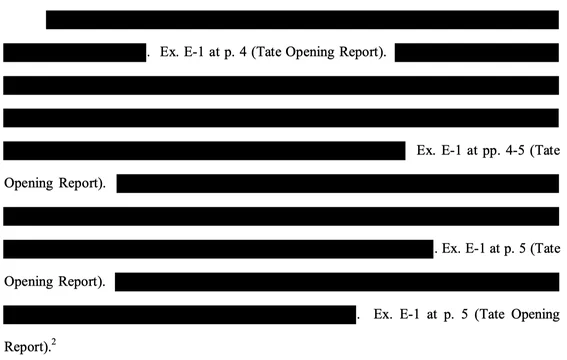
For the past year or so, we've been tracking Judge Andrews' new practice of rejecting filings that redact exhibits in their entirety with a docket entry like the below:
The redacted filings (D.I. 453 , 454 , and 458 ) are REJECTED because parts of them are redacted in their entirety. Absent a compelling reason, supported by a statement under oath by a party, redactions in their entirety are impermissible; redactions must be done so as to redact the least possible amount of the materials submitted. Failure to make a good faith attempt at such redactions may result in sanctions, the most common of which would be simply unsealing the entire filing. Redacting in its entirety a document that contains publicly available materials is prima facie evidence of bad faith. Revised redacted filings are DUE within five business days.
Sysmex Corp. v. Beckman Coulter, Inc., C.A. No. 19-1642-RGA, D.I. 459 (D. Del. Jan. 26, 2022)
As we noted earlier this summer, this is typically the end of the matter, and as of the Court hadn't addressed any motions for leave to redact an exhibit in full.
But finally, a few brave souls have taken up the gauntlet to defend their redactions.
It did not go great.
A Conscientious Request
The procedural posture in ViaTech Techs., Inc. v. Adobe Inc., C.A. No. 20-358-RGA, was a bit odd. The defendant, Adobe, had filed several exhibits to its motion to dismiss under seal. The next week, when redactions were due, Adobe redacted the exhibits in their entirety. Rather than wait for them to be rejected, the plaintiff filed a contemporaneous letter requesting that the exhibits remain redacted in their entireties, along with declarations from their CEO and a representative of a third party.
Barebones Declarations
The exhibits in question struck me as fairly good candidates for sealing in their entirety. One was a licensing agreement between the plaintiff and a third party, and the other was a retainer agreement between plaintiff, the third party and an attorney. Unfortunately, the actual declarations which were meant to explain the specific harm that disclosure would cause were pretty light on the details. For instance, the only substantive statement regarding the license agreement was:
This Exhibit contains highly confidential information regarding the terms of the business relationship between Via Tech and RP with respect to the licensing and enforcement of certain ViaTech patents. Public disclosure of this Exhibit would put Via Tech at a competitive disadvantage by exposing its business strategies and the details of its business relationship with RP to competitors and potential licensees. For example, public disclosure of this Exhibit would harm ViaTech's negotiating position with potential licensees, who would gain an unfair insight into ViaTech's internal plans and strategies regarding patent licensing.
The third party's declaration on this point was substantively identical. The declarations regarding the retainer agreement were similarly vague, noting only that "Public disclosure of this Exhibit would put [plaintiff and the third-party] at a competitive disadvantage by exposing [their] business strategies to potential licensees, who would gain an unfair insight into [their] internal plans and strategies regarding patent licensing and enforcement."
A Last Chance
Several months later (last Friday), Judge Andrews denied the request in a brief Oral Order:
After consideration of D.I. 110 , the request to redact in their entirety exhibits 1 and 3 to D.I. 99 is DENIED. There are some portions of exhibits 1 which I can see should be redacted. I do not see why Exhibit 3 should be redacted even in part. But for now, the only decision I make is that redactions in whole are unjustified. Plaintiff is given one week to propose only such redactions as are necessary to avoid specific identified harm to it. If Plaintiff redacts too much, it should not expect another opportunity. The proposed redactions should be provided to the case manager with the redactions highlighted in yellow. Any proposed redactions should be accompanied by specific evidentiary support as to why the redactions are necessary.
We'll let you know if plaintiff's decide to take another whack at it.
If you enjoyed this post, consider subscribing to receive free e-mail updates about new posts.





